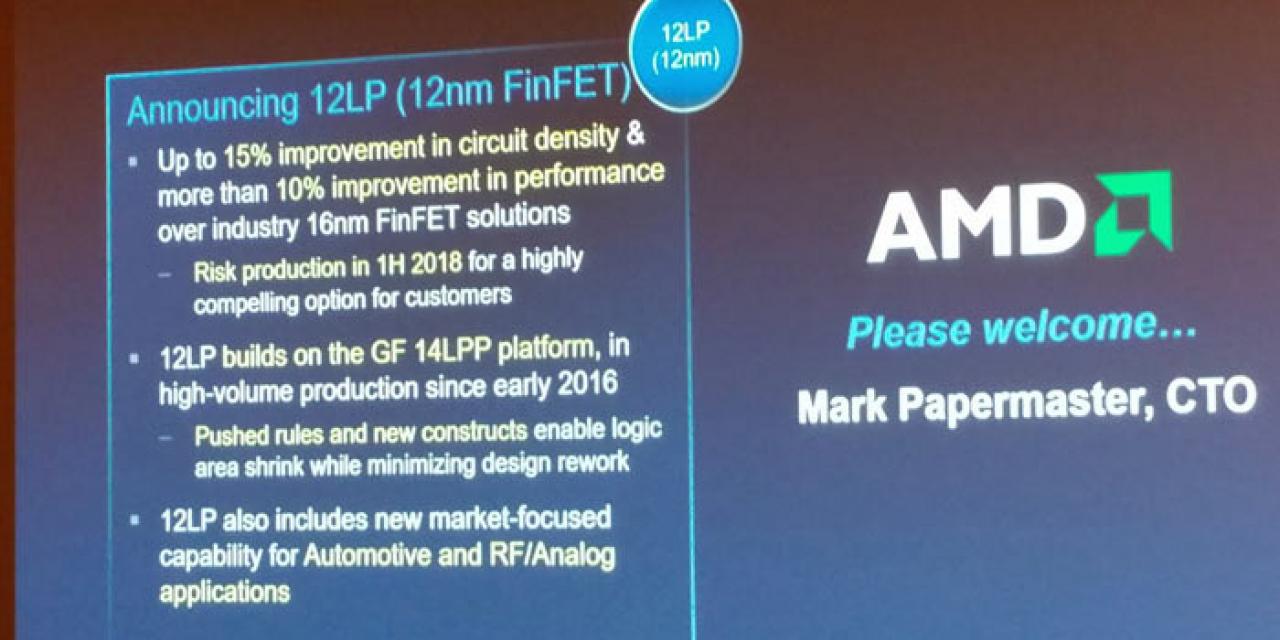
AMD is looking to die shrink both its Ryzen and Vega range of central processing and graphics hardware in 2018, helping to improve performance and reduce power requirements even more than existing offerings. The new 12nm LP (low power) process has been in mass production since 2016, we're told, so AMD should have no problems with supply when it makes the transition.
Current hardware from AMD -- and many other manufacturers -- utilizes the 14nm LP process, which is rather tiny in its own right, but the new 12nm LP will represent a noticeable shrink in die size and efficiency. Although AMD's slides make reasonably hefty claims about performance improvements -- 10 percent overall -- that comparison is made with 16nm parts for some reason. Presumably, because it paints AMD in a more favorable light that way.
Still, die shrinks do normally have a reasonably positive effect on performance and power requirements, so that will likely be the case here too. We're told that the new parts will begin shipping out in Q1 of 2018. That will continue to keep Ryzen relevant against some of Intel's new Coffee Lake chips, though it will unlikely do much to help combat Nvidia's still dominant position in the graphics market, especially with Volta on the horizon.
What's much more likely to keep AMD up with the curve is its impending 7nm transition. Although manufacturing below the 10nm threshold is difficult, Hexus' sourced slides show that AMD is fully committed to making the drop down and will begin production on hardware as soon as the first half of 2018. That means Zen 2 and Vega follow-up technology Navi, won't be too far away.
AMD is really stepping up its game as this year comes to a close and while it didn't hit all of the notes it aimed for, this year has been better than many it's had for a long time.







